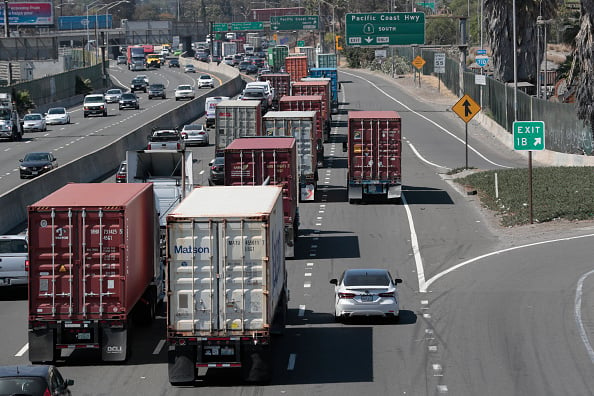Rerouting the Guide Mindset in an Age of Continuous Procurement

At the two-year mark of the coronavirus pandemic, it’s hard to know for sure whether it’s been a disorienting whirlwind or the longest 24 months of our lives.
For shippers forced to adjust their approach to managing supply chains, a lesson learned has been that they can’t always rely on the routing guide to secure capacity.
The routing guide is the manifestation of a shipper’s transportation strategy and budget for the upcoming year. It connects the annual bid with actual load tendering within a transportation management system (TMS), and strategically allocates and assigns each shipment to the appropriate carrier. More advanced routing guides can automatically escalate lanes to back up carriers using a waterfall approach, and patch into a load board or private marketplace outside of the routing guide assignments.
For most organizations, the routing guide handles 80 percent to 90 percent of all shipments — or essentially all contracted moves. But while the routing guide works well for certain lanes, it can fail in others.
It’s time to rethink the routing guide.
First, this is the age of continuous procurement. There’s no “RFP season” anymore. In 2020, the number of weeks that the 150 or more shippers in DAT Freight & Analytics’ business analytics shipper consortium entered new contract rates on more than 100 lanes doubled from the historical average. This increased frequency of bids continued in 2021. Off-cycle or mini-bids aren’t merely smaller versions of an annual RFP. They’re focused, simpler, and intended to solve the problem of securing reliable capacity fast.
Second, the routing guide can fail on lanes with intermittent, non-consistent and low volumes of freight. That’s a problem when there are persistent lane imbalances, a shifting economy, and tight truckload capacity.
Including low-volume lanes as separate point-to-point lanes within an annual bid can create problems for carriers as many of these lanes never have any volume to tender. They have disproportionately low primary-carrier acceptance ratios, all else being equal.
One approach is for shippers to aggregate several low-volume point-to-point lanes into a zone-to-zone lane in order to compile “enough” volume. Unfortunately, these zone-to-zone lanes, even with more loads, tend to have low primary-carrier acceptance rates.
A better strategy involves segmenting lanes into a portfolio of three buckets: dedicated, contract and dynamic. In the first bucket: high-volume, consistent, balanced lanes that are best served by a dedicated or private fleet. The second bucket: medium- to high-volume one-way lanes that aren’t sufficiently balanced within the shipper’s own network. These should be bid out with the annual bid and run through the traditional routing guide.
The third bucket contains lanes where volume is sporadic or low. Instead of throwing these lanes into the routing guide with contract rates that rarely materialize, shippers can hand them to a third party, perhaps through an application program interface (API) connection from the TMS. That way, when a third bucket load comes down, it’s automatically tendered to a third-party logistics provider (3PL), broker or carrier, with the rate set dynamically using indices or with negotiated guardrails.
The routing guide is still an important component within a TMS, just not for every move or every lane. Advances in technology, communication and data science allow for shippers to better manage their freight network as a portfolio — fully utilizing dedicated, contract and dynamic approaches.


